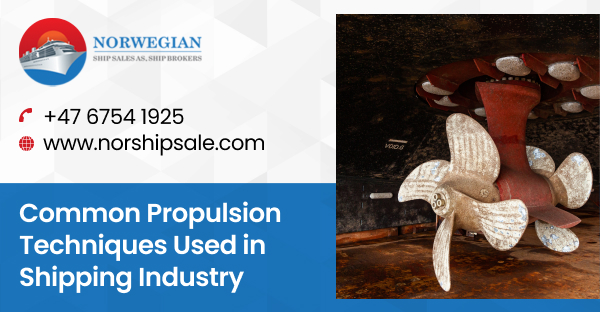The propulsion system used in a ship helps the vessel to move through the water. Marine propulsion systems assist in successfully manoeuvring the ship through the high currents of seas and oceans. But in the modern day, marine propulsion systems have evolved to provide a cleaner and safer underwater ecosystem. New propulsion technologies are being introduced to manage and control fuel emissions. If you have been thinking about investing in fast ferries for sale, it is a good idea to familiarize yourself with the various marine propulsion systems.
In this blog, we look at the different kinds of propulsion technologies used in the maritime sector today.
1. Diesel Propulsion
Diesel propulsion is the most common marine propulsion system used today. From smaller boats to larger ferries, they are used in all types of marine vessels. Diesel propulsion converts thermal forces into mechanical energy. It is more efficient than steam turbine propulsion, which was widely in use during the early 1900s.
2. Wind Propulsion
Wind propulsion system is a great alternative to other propulsion methods that emit large quantities of carbon dioxide gases. Wind propulsion uses sails or some form of wind capture device to manoeuvre the vessel on its path. The one downfall is that they cannot be used for huge commercial ships as they need constant windiness to steer through. There are two forms of wind propulsion being popular today, sail propulsion and kite propulsion.
3. Gas Turbine propulsion
Gas turbine propulsion systems are most popularly used in naval ships. They provide much faster speed, which is desirable if the ship is ever under attack. In some ships, the gas turbine system is used in combination with the steam turbine for increased efficiency. Gas turbines are also used in large merchant ships and cruises.
4. Nuclear Propulsion
Nuclear propulsion has been a technique used by naval ships for some time now. It relies on the principle of nuclear explosion to create energy. Several smaller nuclear reactors are used to create a nuclear fission process that can create enough power to fuel the vessel. Modern merchant ships are now being constructed to adapt to the nuclear propulsion system. The power generated by this nuclear reaction can also be used to generate electricity for the ship. Nuclear propulsion systems show great promise in terms of fuel cost and efficiency.
5. Fuel Cell Propulsion
Fuel cell propulsion makes use of electricity created through batteries and fuel cells to drive a marine vessel forward. Hydrogen is typically the primary fuel component used to convert the fuel into electrical energy without any traditional combustion methods. This makes fuel cell propulsion a clean and eco-friendly system that reduces pollution and carbon emissions. It provides a greener alternative to other marine propulsion systems.
6. LNG Propulsion
LNG, or Liquefied Natural Gas, is an alternative marine fuel that has grown in popularity because of its high fuel efficiency and significantly low greenhouse gas emissions. LNG marine propulsion systems use LNG fuel and bunker fuel to convert chemical energy into mechanical energy. It is an eco-friendly alternative.
7. Battery Propulsion
Battery propulsion systems are commonly used for electric fishing boats, small ferries, yachts, and more. These vessels run on electric batteries or large electric generators that provide enough horsepower for the journey. Battery propulsion systems help reduce fuel consumption, noise pollution, and carbon emissions.
Conclusion
To ensure the maximum operational efficiency of your ship, look at vessels that have two or more propulsion systems that can be used in combination. If you want to purchase fast ferries for sale, contact Norwegian Ships for assistance.


